#pertevniyal valide sultan mosque
Explore tagged Tumblr posts
Text

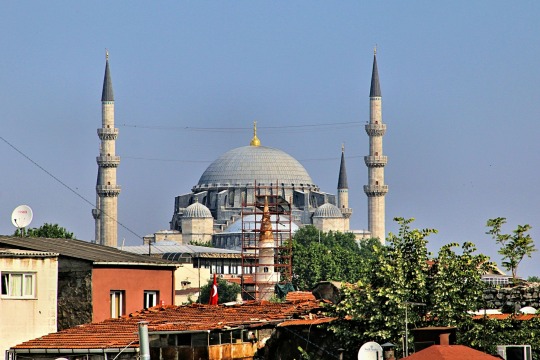
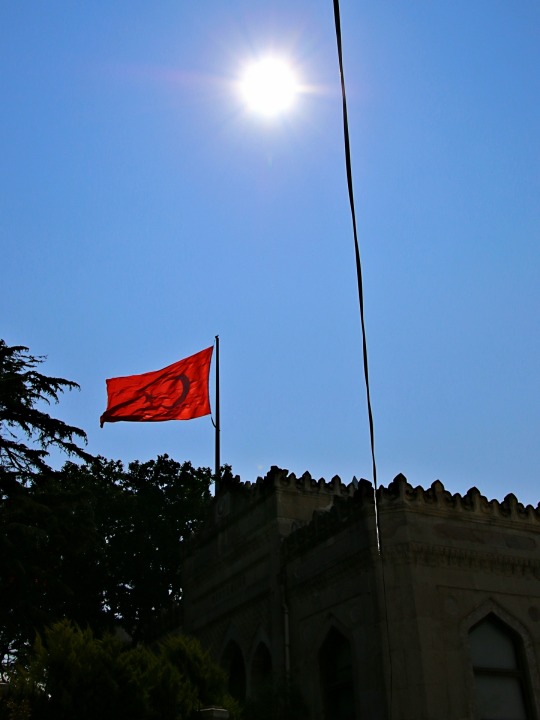
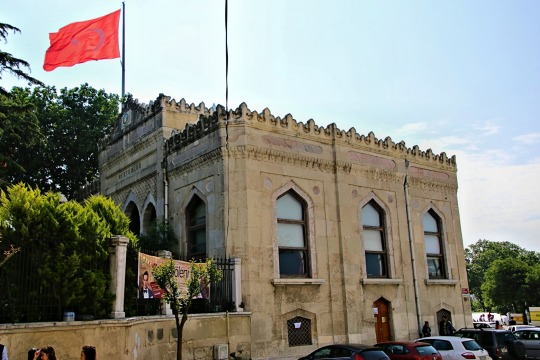


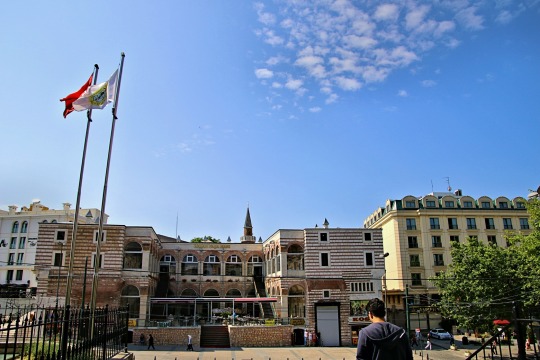
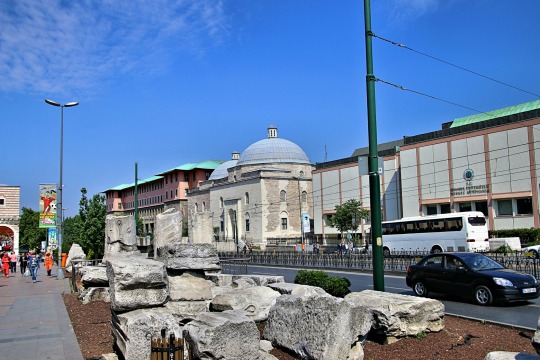

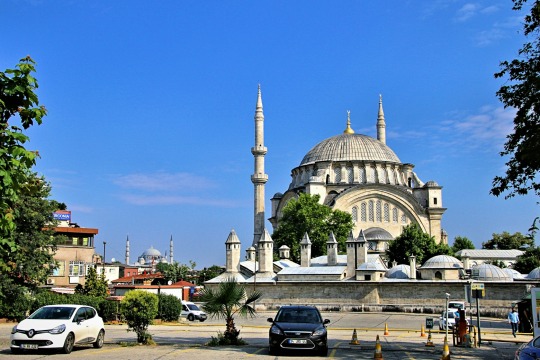

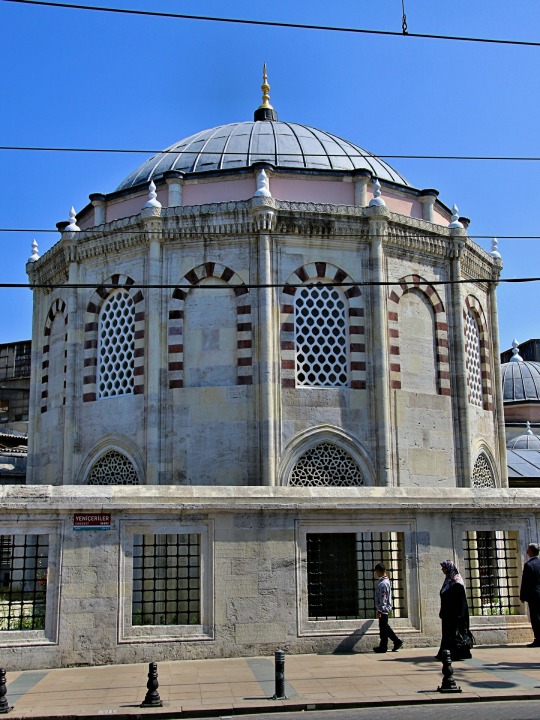
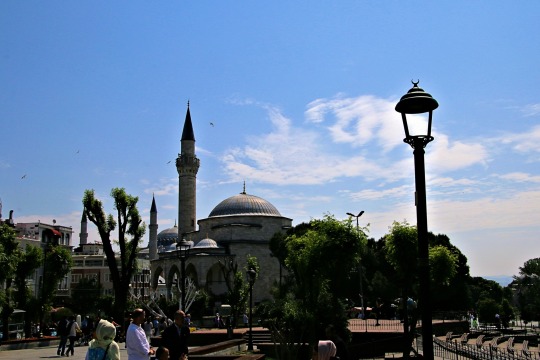
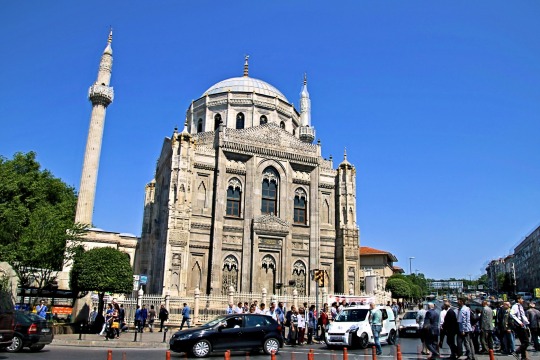


Strolling Through Istanbul
#blue mosque#ottoman architecture#sultan ahmet mosque#suleymaniye mosque#rektorluk#bayezid II mosque#firuz agha mosque#hasanpasa konagi istanbul#forum of theodosius#nuruosmaniye mosque#simkeshane bazaar#sinan pasha tomb#pertevniyal valide sultan mosque#murat pasha mosque#istanbul university#beyazit square#istanbul#turkey
5 notes
·
View notes
Text

Pertevniyal Valide Sultan Mosque in Istanbul
5 notes
·
View notes
Note
I don't guess you got to see the Sultan Ahmet Mosque, did you? It's also very beautiful.//
No, that’s also one of the places I want to visit in the summer. My grandma and waiting for lines are not a good match, lol. She doesn’t want to stay at the hotel but if they’re more than 5 people waiting before a building/mosque she’s like “I’m outta here” and walks away from us so we have to follow her 😂
Oh, there's also this later mosque that's very beautiful - Pertevniyal Valide Sultan Mosque. It has a bit of a different feel because it's late 19th century and very European influenced. It's over in Aksaray.
2 notes
·
View notes
Text
Pertevniyal Valide Sultan Camisi
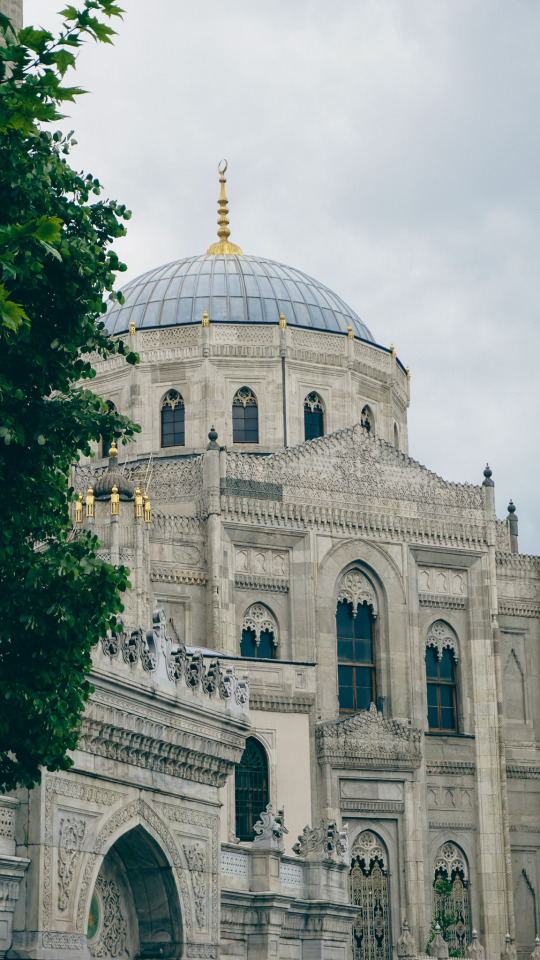
When you stand in front of the Pertevniyal Valide Sultan Mosque, you are first greeted by the impressive and magnificent exterior of the building. Built at the end of the 19th century, this mosque offers an elegant combination of Ottoman and European architecture.
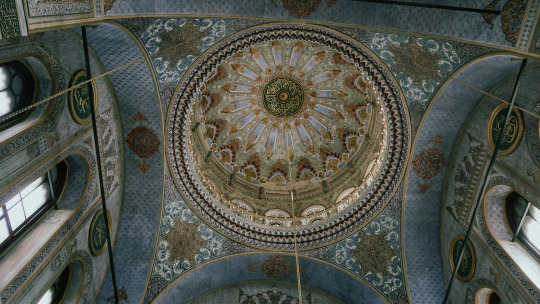
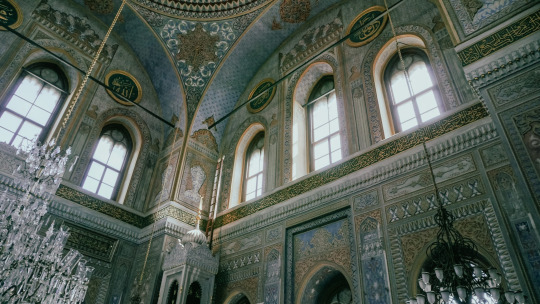
When you look at the exterior of the mosque, the intricate decorations and details immediately attract your attention. Arched windows and stonework show how carefully the building was designed. The fine stone carvings on the exterior embody art and mastery in every detail.
You see the classical lines of Ottoman architecture in the general structure of the mosque, but the European influence is also evident. This combination gives Pertevniyal Valide Sultan Mosque a unique character. As you wander around the exterior of the mosque, you notice a different detail in every corner, and these details encourage you to constantly explore.

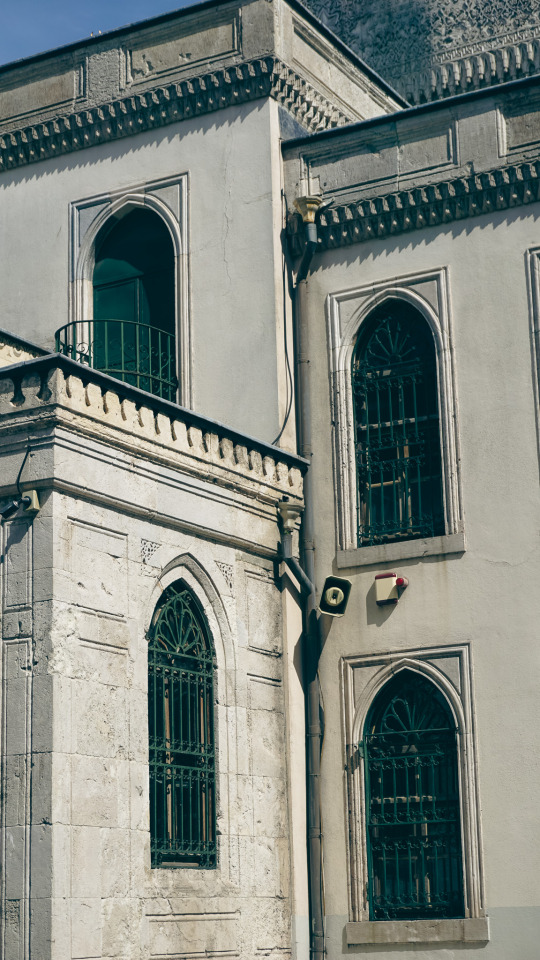
Pertevniyal Valide Sultan Mosque rises among the crowds of Aksaray and attracts attention as an important structure both historically and architecturally. As you stand in front of the mosque and watch this elegant and magnificent structure, you feel the cultural and historical richness of Istanbul once again. This mosque is not only a place of worship, but also a work that fascinates its visitors with its architecture.
0 notes
Text



The Valide Mosque on Aksaray Square is certainly worth a visit. Built in 1871 by the order of Pertevniyal Sultan, the mother of Sultan Abdülaziz, it represents an interesting work of Ottoman architecture of the 19th century. Architect is the Armenian Sarkis Balyan, who was well known in his day.
0 notes
Text



Pertevniyal Valide Sultan Camii, İstanbul.
2 notes
·
View notes
Photo

Aksaray Square and Pertevniyal Valide Sultan Mosque.
#aksaray#pertevniyal valide sultan#mosque#cami#turkey#türkiye#tarih#history#fotoğraf#photography#istanbul
20 notes
·
View notes
Text

Pertevniyal Valide Sultan Mosque, Aksaray, Istanbul, Turkey
#gothic#gothic architecture#gothic mosque#islamic architecture#renaissance#ottoman#aksaray#fatih#constantinople#istanbul#thrace#turkey
6 notes
·
View notes
Note
Sultan Abdul Hamid II consorts and children, take your time I won’t hurry you
I'm sorry for being late but the man had so many children they just would never end.
Consorts
Nâzik-edâ Başkadınefendi (1848-1895): the mother of Ulviye Sultan, the violent death of her only child was a shock from which she never recovered. She gained a lot of weight in a short period of time and died on 11 April 1895. She was buried in the mausoleum of Murad V in the Yeni Mosque.
Sâfi-nâz Nûr-efzûn 2. Kadınefendi (1850-1915): her real name was Ayşe and she was the youngest sister of Abdülmecid I's consort Yıldız Hanım. When Yıldız Hanım married Abdülmecid, Ayşe was sent to the household of Şehzade Abdülaziz. According to Harun Açba, Abdülaziz was fascinated by her beauty and wanted to marry her but she declined because she was in love with Şehzade Abdülhamid. The feeling was mutual and the young prince asked his step-mother Perestu Kadınefendi's help. She told Abdülaziz that Safinaz was ill and that she needed a change of air; later, Abdülaziz was informed that she had passed away. Abdülhamid therefore married Safinaz, now Nurefsun, in October 1868. She could not get used to life in the harem, though, and wanted to be Abdülhamid's only wife. She therefore asked for a divorce, which she was granted in 1879. She died in 1915.
Bedr-i Felek Başkadınefendi (1851-1930): she was a Circassian princess who entered the Palace service after fleeing Caucasus. She married the future Abdülhamid II on 15 November 1868 and had three children with him: Şehzade Mehmed Selim, Şehzade Ahmed Nuri and Zekiye Sultan. It is said that Abdülhamid II greatly disliked his son Mehmed Selim and it is for this reason that he never visited Bedrifelek in her apartments. Nevertheless, she took over Rahime Perestu Valide Sultan's duties in the harem after her death. Following the 31 March Incident, there was the concrete possibility for Bedrifelek to become Valide Sultan because her son Mehmed Selim had been chosen as his father's successor. In the end this did not happen and maybe for this reason she did not follow Abdülhamid to Thessaloniki. After the fall of the Empire, she settled in a mansion in Serencebey which she never left. She was described as always melancholic and with tears in her eyes whenever she mentioned the old times in the Palace. She died on 8 February 1930.
Bîdâr 2. Kadınefendi (1855/8-1918): considered the most beautiful and charming of Abdülhamid II's consorts, she was born a Kabardian princess. She was tall, with brown hair and green penetrating eyes. She was the mother of Fatma Naime Sultan and Şehzade Abdülkaadir. Her beauty was talked about in Europe as well, to the point that when in 1918 Empress Zita visited Istanbul, she asked to visit Bidar. The consort, unfortunately, had died in January of the same year.
Dil-pesend 3. Kadınefendi (1861/5-1901): there is not much information about her, Ayşe Sultan even mistook her for Fatma Pesend in her memoirs. She seems to have been Georgian and given to the Palace at a young age but there is no information about her parents. She married Abdülhamid II in 1884 in Yıldız Palace; a year later she gave birth to Naile Sultan. She died young and was buried in the Yahya Efendi Cemetery.
Mezîde Mestân 3. Kadınefendi (1869-1909): her real name Kadriye or Kamile, she was the aunt of Mehmed VI Vahideddin's Senior Consort Emine Nazikeda. Described as very timid, she was apparently tall, with brown eyes and hair. She married Abdülhamid in 1885 and in the same year gave birth to her only child, Şehzade Mehmed Burhaneddid, Abdülhamid II's most beloved son. As the mother of the sultan's favourite son she was very influential but never abused her position; instead, she was known for helping everyone and even her step-children loved her. She died three months before Abdülhamid II's deposition and was buried in the Yahya Efendi Cemetery.
Emsâl-i Nûr 3. Kadınefendi (1866-1952): she entered the harem with her sister Tesrid Hanım. Abdülhamid II noticed Emsalinur because of her beauty and married her in 1885. A year later she gave birth to her only child, Şadiye Sultan. She built a mosque in Kırkpınar in 1907 and was gifted a mansion in Nişantaşı, where she lived after her husband's deposition. She took the surname Kaya after the Surname Law of 1934. In 1948, her mansion was put on sale by the Ministry of Finance and therefore had to live in a public hospice until her death on 20 November 1952. Her sister Tesrid married Şehzade İbrahim Tevfik Efendi.
Ayşe Dest-i Zer Müşfika “Kayısoy” 4. Kadınefendi (1867-1961): her real name was Ayşe and she was of Abkhazian origin. Her father was a soldier and her mother took Ayşe and her sister to Pertevniyal Valide Sultan, who liked them very much. The valide sultan changed her name to Destizer. She moved to Dolmabahçe Palace when Pertevniyal Sultan died and there attracted Abdülhamid II's attention, who changed her name into Müşfika. She married him on 12 February 1886 and a year later she gave birth to her only child, Ayşe Sultan. After Mezîde Mestân's death she was raised to the rank of Fourth Imperial Consort. She followed Abdülhamid II in his exile to Thessaloniki and afterwards in Beylerbeyi Palace, where she stayed until his death. it is said that the former sultan died in her arms. She settled in Gazi Osman Paşa's mansion in Serencebey after the expulsion of the Ottoman Dynasty. She died on 16 July 1961 and was buried in the Yahya Efendi Cemetery.
Sâz-kâr Başhanımefendi (1873-1945): her real name Fatma, she belonged to the Abkhazian aristocracy and entered Palace service at a young age. After receiving a thorough education, she married Abdülhamid II in 1890; a year later she gave birth to her only child, Refia Sultan. She was considered very beautiful: tall, with blond hair and blue eyes, she was very elegant. She followed Abdülhamid II to Thessaloniki and then returned to Istanbul, where she settled down with her fellow wife Peyveste Hanım. In 1924 she chose to go in exile with her daughter and died in 1945 in Damascus. She was buried in the Sultan Selim Mosque in Damascus.
Hadîce Râbi’a Peyveste 2. Hanımefendi (1873-1943): her real name Rabia, she was the daughter of an Abkhazian prince. She was introduced to palace service by a relative; she first served Nazikeda BaşKadınefendi with her sisters and then became Chief Harem Treasurer. Abdülhamid II married her in 1893. She was the aunt of Leyla Açba and this is how her niece described her in her memoirs: "My aunt was a tall, green-eyed, brown-haired, delicate, beautiful woman. Her real name was Rabia, and she was the youngest of five siblings ..." In 1894 she gave birth to her only child, Şehzade Abdürrahim Efendi. Peyveste was so respected and admired by her husband that she was given the Hanedan-ı Ali Osman Order even though it was usually reserved to members of the Dynasty. Peyveste had a personal mansion in which she lived until Abdülhamid II's dethronement, when she followed him to Thessaloniki. When they returned to Istanbul, she settled down in Şişli with Sâz-kâr Başhanımefendi, her favourite among her husband's consort. Their rooms were on the same floor and every day they took coffee together and reminisced about the past. As Şehzade Abdürrahim lived close by, he used to visit often. In 1924, Peyveste Hanım left Turkey with her son and settled down in Paris, where he had bought a nice flat in Boulevard Murat. She died in 1943 and was buried in the Muslim cemetery of Bobigny.
Fatma Pesend 3. Hanımefendi (1876-1924): her real name Fatma Kadriye, she was a member of the aristocratic Açba family. Her mother was a Tatar Princess. Fatma Pesend was highly educated: she spoke Italian and French, she was a great pianist and painter, she enjoyed horseback riding and she loved reading. She met Abdülhamid II during a visit to the Palace and they got married in 1896, when her name was changed into Pesend. Her only child, Hatice Sultan, was born in 1897 but died at seven months of smallpox. In his grief, Abdülhamid had the first paediatric hospital of the empire built; Fatma Pesend was left in charge of its administration. She was one of the favourite consorts of the sultan and was known for her kindness and tolerance. She used to visit the Şişli Etfal Hospital every week, paying particularly good attention to the treatment of orphans. Once she took off the necklace she was wearing and gifted it to a poor woman. She was one of the consorts that followed Abdülhamid II in exile in Thessaloniki but when they returned to Istanbul she wasn't allowed to live in Beylerbeyi Palace with him and instead moved in with her father. When Abdülhamid II died, she braided her hair, cut it off and threw it into the sea. She died in 1924 and was buried next to her mother in the Karacaahmet Cemetery.
Behîce “Maan” 4. Hanımefendi (1882-1969): her real name Behiye, she was Sazkar Hanımefendi's cousin. She was brought to the Palace to be a potential bride for Şehzade Burhaneddin but Abdülhamid II was so enthralled by her beauty that he married her himself on 10 May 1900 even though Behiye didn't want to. A year later she gave birth to the twins Nûreddîn and Bedreddîn, but Bedreddîn died at the age of two. She was blonde with blue eyes. She was also very arrogant and proud. After Abdülhamid II's dethronement, she stayed in Istanbul with her son until 1924, when they moved in Naples, Italy, in an apartment in Via Generale Orsini. She fell on hard times in Naples because she had no money and what she was sent from Turkey was being embezzled by her servant. A relative who visited her in Italy was appalled by the conditions she lived in: her hair was unkempt, her nails had grown extremely long and she had not washed herself in weeks. Thankfully, Behice Hanım was brought back to Istanbul by the Maan family but she was so ill that she died only months later, on 22 October 1969. She was buried in the Yahya Efendi Cemetery.
Sâliha N��ciye Kadınefendi (1882/7-1923): her real name Zeliha, she changed her name into Saliha Naciye when she entered palace service. She was noticed by Abdülhamid II three years after arriving in Yıldız Palace and married him in 1904. She gave birth to Şehzade Mehmed Abid Efendi a year later and to Samiye Sultan in 1908. Upon the birth of Samiye Sultan, she was granted the unusual title of V Kadınefendi. She was known for her kindness and it is said that she attracted the sultan with her modesty. After Abdülhamid II's deposition, she followed him first to Thessaloniki and then to Beylebeyi Palace in Istanbul, where she refused to leave his side. After Abdülhamid II's death, she settled in a mansion in Erenköy, where she passed away in 1923. She was buried in the mausoleum of Mahmud II.
Children

Ulviye Sultan (1868-1875): Abdülhamid II's eldest daughter, she died at the age of 7 while she played with matches. Her mother was playing the piano and the servants were having dinner so Ulviye was left unsupervised. Her dress caught fire and Nâzikedâ Başkadın tried to take it off her and burnt her hands while trying to open the metallic belt the child was wearing. Ulviye Sultan died burning alive, nothing could be done for her. Her death was a tremendous shock for her mother, from which she never recovered.
Şehzâde Mehmed Selîm Efendi (11.1.1870 - 5.5.1937): son of Bedrifelek Başkadınefendi, he was Abdülhamîd II's eldest son. He famously did not get along with his father. He had two consorts: Deryâl (İryâle) Başhanımefendi (1870-1904) and Nîlûfer Eflâkyâr Başhanımefendi (1887-1930s). He had three children: Şehzâde Mehmed Efendi (1887-1890), Emine Nemika Sultan (1888-1969) and Şehzâde Mehmed Abdülkerîm Efendi (1906 - 1935)
Zekiye Sultan (1872-1950): here
Fatma Naime Sultan (5.9.1876-1944/45): the eldest child of her mother Bidar, Naime was one of her father's favourite children, who used to call her "my accession daughter" because she had been born close to his accession to the throne. Abbas II Hilmi, the last Khedive of Egypt, asked for her hand but Abdülhamid did not approve of the match and turned him down. Naime Sultan married Mehmed Kemaleddin Paşa, Gazi Osman Paşa's second born son and brother of Zekiye Sultan's husband Alì Nureddin Paşa, in Ortaköy Palace on 17 March 1898. They had two children together: Sultânzâde Dâmad Mehmed Câhid Beyefendi (1899-1977) and Âdile Hanım-Sultan (1900-1979); both had very advantageous marriages. Abdülhamid II annulled the marriage in 1904 when it was discovered that Kemaleddin Paşa had been carrying out an affair with another princess, Hatice Sultan. Naime Sultan therefore re-married on 11 July 1907, this time to İşkodralızâde Mahmûd Celâleddîn Paşa, but had no children with him. After 1924, they left the Empire for France, Italy and lastly Albania, where Celâleddîn Paşa had family lands. After his death and the advent of communist rule in Albania, Naime Sultan lost her income and died in poverty either in 1944 or 1945. She was buried in Tirana.
Şehzâde Mehmed Abdülkadir Efendi (1878 - 1944): son of Bidar Kadınefendi, he was the first son to be born during the sultanate of Abdülhamid II. He played the piano and the violin. He had three consorts: Mihribân Hanımefendi, Hadîce Mâcide Hanımefendi and Fatma Meziyyet Hanım. His third marriage was not recognised by Mehmed V because he had got married without the sultan's permission. He had six children: Mehmed Orhan Efendi (12.10.1909 - 13.3.1994), later head of the Ottoman family; Necîb Ertuğrul Efendi (27.3.1914 - 7.2.1994), a doctor; Alâeddîn Efendi (2.1.1917 - Sofya, 21.11.1999); Bîdâr Sultan (1924-1924), clearly named after her paternal grandmother; Osman Efendi (1925 - 1934?); Safvet Nesl-i Şah Sultan (25.12.1925).
Şehzâde Ahmed Nûrî Efendi (12.2.1878 - 7.8.1944): son of Bedrifelek Başkadınefendi, he was only 27 days younger than his brother Abdülkadir. He married Fahriye Hanımefendi but had no children with her. He died in Nice, France but was buried in the Sultan Selim Mosque in Damascus.
Naile Sultan (9.2.1885-25.10.1957): daughter of Dilpesend Kadınefendi, she learned to play the piano, the harp and the violoncello from Lombardi Bey. In 1901 she was engaged to Gazi Osman Paşa's third son, Cemaleddin Bey, but Kemaleddin Paşa's affair with Hatice Sultan made the wedding fall through. She therefore married Germiyânoğlu Arif Hikmet Paşa on 27 February 1905 in Kuruçeşme Palace. The marriage was childless. In 1924 they settled in Beirut, where Hikmet Paşa died in 1942. She was allowed to return to Istanbul, where she eventually died. She was buried in the Yahya Efendi Cemetery.
Şehzâde Mehmed Burhâneddîn Efendi (19.12.1885 - 15.6.1949): son of Mezîde Mestân Kadınefendi, he was a composer, a painter, a piano and a cello virtuoso. He was circumcised with his elder brothers Abdülkadir and Ahmed Nûrî in 1890. He was named after Abdülhamid II's favourite brother and for a while he was his favourite son, sitting next to him in carriages, to the point that there were talks that he would be named Crown Prince. He was offered the Kingdom of Albania in 1913 but he refused because he did not want to waive his rights to the Ottoman throne. In the summer of 1921 he was offered the throne of Iraq but Great Britain had another candidate in mind and instead enthroned Faysal, former King of Syria. He had 4 wives: Hidâyet Hanımefendi, Aliyye Melek Nazlıyâr “Yalçın” Hanımefendi, Lady Georgina Leonora Mosselmans, Marquess of Queensberry (the marriage was not recognised by the Caliph of Islam and was therefore morganatic) and lastly Elsie Deming Jackson (another morganatic marriage not recognised by the head of the Ottoman dynasty). Burhâneddîn Efendi had two sons: Mehmed Fahreddin Efendi (14.11.1911 - 13.7.1968) and Ertuğrul Osman Efendi (13/31.8.1912-23.9.2009), later head of the Ottoman dynasty. Burhâneddîn Efendi died in New York at the age of 63 but when his family asked for permission to bury him in Istanbul, the Turkish government denied it and was therefore buried in the Sultan Selim Mosque in Damascus.
Şadiye Sultan (1886/87-20.11.1977): daughter of Emsâl-i Nûr Kadınefendi, she learned to play European music from Lombardi Bey and Turkish music from Tanburi Cemil Bey. In 1909 she was engaged to Ali Namik Bey, Grand Vizier Küçük Mehmed Saïd Paşa's son, but before the marriage could take place, Abdülhamid II was dethroned. Şadiye Sultan did not like the Grand Vizier's behaviour during the 31 March Incident and therefore broke the engagement with his son in 1910. Enver Bey asked for her hand but she refused him as he worked to depose her father. In the end she married Fahir Beyefendi in 1910, a diplomat. With him she had her only child: Sâmiye Hanım-Sultan (1918-1992). Fahir Beyefendi died in 1922 and two years later, Şadiye and her daughter were expelled from Turkey. They settled in Paris, where Şadiye married Reşâd Hâlis Beyefendi in 1931. Her second marriage produced no children. Left a widow in 1938, she first followed her daughter to the USA and then travelled extensively in Europe before going back to Istanbul 1953. She died there in 1977 and, with the permission of the government, she was buried in the mausoleum of Mahmud II.
Hamîde Ayşe Sultan (1/2.11.1887-10.8.1960): daughter of Müşfika Kadınefendi, she was born in Yıldız Palace. She received her education with her sister Şadiye in a special room in Yeniköşk which had been built to be a classroom. Their education plan was extensive: the Qur'an, history of the Empire, geography, music, French, and even painting. She learned how to play the Hamidiye March (the anthem of the Ottoman Empire) and also composed lullabies. She was engaged to Ahmed Nâmî Beyefendi in 1908 and married him 1911 in a double ceremony with her younger sister Refia Sultan. With him, she had three children: Ömer Nâmî Beyefendi (1911-17.3.1993), Aliyye Namiye Hanım-Sultan (1913-1913) and Osman Nâmî Beyefendi (13.1.1918-2010). In 1921 she met Lieutenant Colonel Mehmed Ali Bey, son of Mehmed Raûf Paşa and aide to Sultan Mehmed VI, at a feast in Dolmabahçe Palace. The two fell in love at first sight but Mehmed Ali Bey was married with children. Nevertheless, they both divorced their spouses and got married on 3 April 1921 in Nişantaşı Palace. A year later, Sultânzâde Abdülhamîd Raûf Beyefendi (1921–3.1981) was born. After 1924 she moved to Paris with her family, where they rented a small apartment near Versailles. In 1937, Mehmed Ali Bey died and, according to Ayşe Sultan, because of homesickness. In 1950, female members of the dynasty were allowed to go back to Turkey and in 1952 Ayşe Sultan went back to Istanbul and adopted Osmanoğlu as surname. She lived with her mother Müşfika Kadınefendi, now called Müşfika Kayısoy, and worked at her memoirs My father, Abdülhamid. Ayşe Osmanoğlu died at the age of 73 and was buried in the Yahya Efendi Cemetery.
Refia Sultan (13/15.6.1891-1938/1945): daughter of Sâzkâr Başhanımefendi, she was born in Yıldız Palace. She married Ali Fuâd Beyefendi in 1912, the son of Müşir Ahmed Eyüb Paşa, and had two daughters with him: Rabî’a Hanım-Sultan (13.7.1911 - 19.6.1988) and Ayşe Hamide Hanım-Sultân (1918 - 1936)
Şehzâde Abdürrahîm Hayrî Efendi (15.8.1894 - 1.1.1952): son of Hadîce Râbia Peyveste Hanımefendi, he was an extraordinary musician, being able to play several instruments among which the piano, the cello and the mandolin. He received 2 votes at the Grand Assembly of Turkey but in the end it was Abdülmecîd Efendi who was elected Caliph. He married Princess Emîne Hanımefendi of Egypt and had a daughter with her: Mihr-i Mâh Selçuk Sultan (15.6.1920 - 1982). Abdürrahîm Hayrî Efendi died on the night of New Year's Eve after ingesting too many sleeping pills. He was buried in Pairs.
Hadîce Sultan (10.7.1897 - 14.2.1898): daughter of Fatma Pesend Hanımefendi, she died of smallpox and was buried in the Yahya Efendi Cemetery.
Aliyye Sultan: died a couple of days after her birth, around 1900.
Cemile Sultan: died a couple of days after her birth, around 1900.
Şehzâde Ahmed Nûreddîn Efendi (22.6.1901 - 1944): son of Behîce Hanımefendi and twin brother of Mehmed Bedreddîn Efendi, he was a very good pianist. He was studied in Germany until the end of 1918, when he settled in Paris. He wrote some memoirs and sent them to his sister Ayşe. He never married and died in Paris, where he was buried.
Şehzâde Mehmed Bedreddîn Efendi (22.6.1901-13.10.1903): son of Behîce Hanımefendi and twin brother of Ahmed Nûreddîn Efendi, he died of meningitis and was buried in the Yahya Efendi Cemetery.
Şehzâde Mehmed Âbid Efendi (17.5.1905 - 8.12.1973): son of Sâliha Nâciye Kadınefendi, after 1924 he first asked to go to Egypt but was denied entry, therefore he lived for a while with his brother Mehmed Selim in Beirut. In 1935, he arrived in France, where he attended the Sorbonne and graduated in Political Sciences. The Japanese emperor considered him a candidate for the throne of Turkistan; Zog I of Albania also thought of making him Crown Prince, as at the moment he had no issue. Mehmed Abid Efendi was Albania's ambassador to Paris until 1939, when Zog I was overthrown by Fascist Italy. He married an Albanian princess, Seniyye Hanımefendi (born Sanije Zogu) but had no issue. After divorcing in 1951 he settled in Beirut, where he died. He was buried in the Sultan Selim Mosque in Damascus.
Sâmiye Sultan (16.1.1908 - 24.1.1909): daughter of Sâliha Nâciye Kadınefendi, she died of pneumonia at the age of one. She was buried either in the Şehzâde Kemâleddîn Mausoleum or in the Yahya Efendi Cemetery.
sources: Harun Açba - Kadın Efendiler, Yılmaz Öztuna - II. Abdülhamid, Zamanı ve Şahsiyeti, Necdet Sakaoğlu - Bu Mülkün Kadın Sultanları
27 notes
·
View notes
Photo

Pertevniyal Valide Sultan Mosque by ksenia_dzhalaganiya
7 notes
·
View notes
Photo

Pertevniyal Valide Sultan Mosque, Istanbul [1300x2048]
2 notes
·
View notes
Photo

AZİZİYE CAMİİ(I) Cami ilk kez 1671-1676 yılları arasında Sultan VI.Mehmed'in muhasibi Damat Mustafa Paşa tarafından yaptırılmıştır.1867 yılında yangın geçiren cami,1874'te Sultan Abdulaziz'in annesi Pertevniyal Valide Sultan'ın yardımıyla tamamlanmıştır. Cami barok,ampir ve rokoko üslubunun bir karışımı halinde kesme taştan yapılmıştır.Caminin kurşunla kaplı merkezi kubbesi köşelerde yarım kubbelerle desteklenmiştir. #cami #mosque #yangın #fire #yardım #help #sultanabdülaziz #pertevniyal #pertevniyalvalidesultan #barok #baroque #ampir #rokoko #rococo #taş #taşcı #taşustası #mason (Aziziye Mosque) https://www.instagram.com/p/CEV3gMGgFgu/?igshid=12tx7yixy5jm4
#cami#mosque#yangın#fire#yardım#help#sultanabdülaziz#pertevniyal#pertevniyalvalidesultan#barok#baroque#ampir#rokoko#rococo#taş#taşcı#taşustası#mason
0 notes
Text
İSTANBUL’U HİÇ BÖYLE GÖRMEDİNİZ https://ift.tt/3drzwBK
Dron gözünden İstanbul hikayeleri
Dünyanın en köklü ve büyük şehirlerinden biri olan İstanbul’un her yeri tarihi mirasla, her köşesi hikayelerle dolu. Gezi yazarı Şenay Akkurt, duayen gazeteci Coşkun Aral’la birlikte İstanbul’un boş sokaklarını paylaşırken; teknoloji yazarı Timur Akkurt da DJI Mavic 2 Pro’yla sessiz şehirden görüntüler aldı. Şenay Akkurt ile Hayat Bana Güzel programı Allianz Motto Müzik YouTube kanalı için ger��ekleştirilen çekim, birbirinden güzel görüntüler sergiliyor.
“Dron bile şaşırdı”
Şenay Akkurt “Hayat Bana Güzel” İstanbul özel bölümünde Coşkun Aral hikayeleriyle İstanbul hikayelerini birleştirerek boş İstanbul dekorunda çok özel bir bölüm çekti. Yarım asırdır fotoğrafçılık yapan Coşkun Aral, boş İstanbul çekimleri esnasında yaşadıklarını “Mesleğe ilk başladığım yıllarda karanlık odalarda siyah beyaz fotoğrafı çıkartmak için saatler harcardık. Şimdi bu dronlarla inanılmaz görüntüler alabiliyoruz. Hele ki sahne Istanbul’sa, ortaya daha da güzel şeyler çıkıyor. Dron bile şaşırdı milyonları barındıran Istanbul’un bomboş sokaklarına. Ama Istanbul bu, her hali ayrı güzel” sözleriyle dile getirdi. Timur Akkurt’un DJI mavic 2 pro ile çekilmiş boş istanbul klibi de çok yakında izleyicilerle buluşmaya hazırlanıyor.
7 tepeli şehre dair kısa kısa:
Rumeli Hisarı: Bahar aylarında erguvanların da çıkmasıyla ayrı bir güzelliğe sahne olan Rumeli Hisarı; Padişah Fatih Sultan Mehmet tarafından, İstanbul’un fethinden önce kuzeyden gelecek saldırıları engellemek için inşa edildi. Sarıyer ilçesinde bulunduğu semte adını veren hisarın her bir kulesi, yapım sırasında ayrı bir paşa tarafından denetlendi. Bu yüzden hisardaki kulelerin isimleri, onunla ilgilenen paşaların isimleriyle anılır.
Haydarpaşa Garı: 30 Mayıs 1906 tarihinde yapımına başlanan gar 19 Ağustos 1908 tarihinde hizmete açıldı. Bir rivayete göre binanın bulunduğu sahaya III. Selim’in paşalarından Haydar Paşa’nın adı verildiği söyleniyor. Yeşilçam filmlerinde de İstanbul’a giriş sahnesinin başlangıcı olan meşhur merdivenler, pek çok insanın İstanbul’la buluşmasının sembolü olarak görülüyor. Restorasyonu devam eden tarihi gar, Sultan II.Abdülhamid’in Hicaz demiryolu hattı projesinin başlangıç durağı olarak planlanmıştı.
Aksaray: Geçmişten bugüne İstanbul’a göç eden insanların toplandığı yer olarak bilinen Aksaray, İstanbul’un en köklü semtlerinden biri. Tarihi yarımada içinde yer alan semt, 19.yy neogotik mimari örneklerinden Pertevniyal Valide Sultan Camii’yi de sınırlarında barındırıyor. Coşkun Aral, çocukluğunun geçtiği Aksaray’ı: “İstanbul’daki ilk ikamet ettiğimiz ev Ragıp Bey Sokak’tı. Bir komuşumuz Siirtli, diğer komşumuz Balkan göçmeniydi. Sokak boyunca dümdüz gittiğimizde Arnavut Turşucusunu görürdük. Bu yapı İstanbul’un geçirgenliğinin göstergesiydi.”sözleriyle anlatıyor.
Sultanahmet Meydanı: İstanbul’un kurulduğu yer olarak da bilinen, Doğu Roma döneminde hipodrom olarak kullanılan meydan, hem Katolik hem Ortodoks hem de İslam medeniyeti için önemli bir yapı olan Ayasofya Müzesi’ni barındırıyor. Bir diğer adıyla ley hatları olan, dünyayı saran manyetik alan çizgilerinden birinin yer aldığı alanlardan birinin üzerine inşa edilen Ayasofya’nın; Doğu Roma İmparatoru I.Justinianus’un rüyasında görüp mimarlarına yaptırdığı söyleniyor.
Hemen karşısında yer alan ve meydana adını veren Sultanahmet Camii, Osmanlı Padişahı Sultan I.Ahmet tarafından Mimar Sinan’ın öğrencilerinde Sedefkar Mehmet Ağa’ya yaptırıldı. Mekke dışında inşa edilen ilk altı minareli camii olarak olan Sultanahmet Camii, içindeki İznik çinilerinden dolayı dünya tarafından Blue Mosque(Mavi Camii) olarak biliniyor. Dünyanın en ünlü kaşiflerinden olan Marco Polo da hayatının önemli bir kısmını burada geçirdi ve yolculuklarından birine burada başladı.
Kapalıçarşı: Yerli ve yabancı pek çok tursti kendine çeken Kapalıçarşı, dünya üzerinden yapılmış en büyük çarşılardan biri. Binlerce dükkan barındıran Kapalıçarşı, İstanbul’un gezmesi en keyifli yerlerinden biri olarak görülüyor.
Galata Köprüsü: Olta balıkçılarının buluşma noktalarından biri olan köprü, Haliç üzerinden iki yakayı birbirine bağlıyor. Peyami Safa’nın romanı Fatih Harbiye’de, Fatih ilçesi’nden Harbiye’ye köprü yoluyla gidenlerin farklı uygarlık ve kültürleri gördüğünü anlatır. Galata Köprüsü tasarım olarak başka köprülerden pek farklı olmasa da kültürel değeri nedeniyle pek çok edebiyatçı, ressam, yönetmen ve oymacıya konu olmuştur. Dünyaca bilinen kağıt oyunu Briç’in adının da Galata Köprüsü’nden geldiği söylenir. Kırım Savaşı zamanı İstanbul’daki İngiliz subayları Galata Köprüsü altındaki kahvehanelerde kağıt oynamaya geldikleri için, bu oyuna “Bridge”(Köprü) adını koydukları rivayet edilir.
Galata Kulesi: 6. yüzyıldan beri ayakta duran Galata Kulesi, Hezarfen Ahmed Çelebi efsanesine de ev sahipliği yapıyor. 17. yüzyılda yaşayan Hezarfen Ahmed Çelebi’nin, Galata Kulesi tepesinden kendi icat ettiği kanatlarla boşluğa atladığı ve Üsküdar’a kadar süzüldüğü fotoğraf İstanbul’un simgelerinden biri.
Tophane: Semtin sembollerinden biri olan Kılıç Ali Paşa Camii’nin yer aldığı Tophane’nin hikayelerinde ünlü yazarlar Miguel de Cervantes ve Jules Verne’in adını görebiliriz. Modern bilim-kurgunun öncülerinden Verne’nin iki ciltlik eseri “İnatçı Keraban”’da Ramazan ayındaki Tophane’ye geniş yer veriyor.
youtube
from Aeroportist I Güncel Havacılık Haberleri https://ift.tt/2zfq1XB via IFTTT
0 notes
Photo

#mosque in #istanbul | #cami #istanbul 🤙 (Pertevniyal Valide Sultan Mosque) https://www.instagram.com/p/Bv84xzJl4_0/?utm_source=ig_tumblr_share&igshid=1qrcnn2yg1xxa
0 notes
Text
Pertevniyal Valide Sultan Mosque in Istanbul, Turkey
http://bit.ly/2XSgEsc Pertevniyal Valide Sultan Mosque in Istanbul, Turkey - http://bit.ly/2XSgEsc
0 notes
Photo

Hedefimiz; ülkemizin AB üyeliği sürecinde, tarihsel ve kültürel değerlerini koruyan bir ilçe olarak, ulusal ve evrensel kimlik zenginliğine katkı sağlamaktır. 📍Pertevniyal Valide Sultan Camii #FatihinDegerleri (Pertevniyal Valide Sultan Mosque) https://www.instagram.com/p/BrsJz5VnMvj/?utm_source=ig_tumblr_share&igshid=gifaomtrp2vx
0 notes